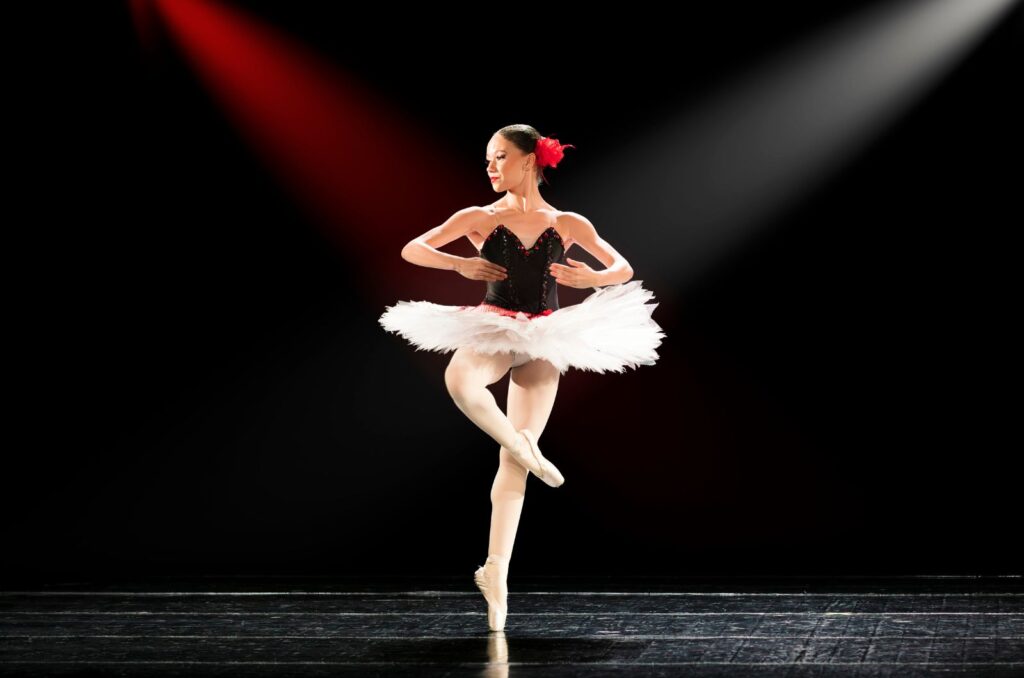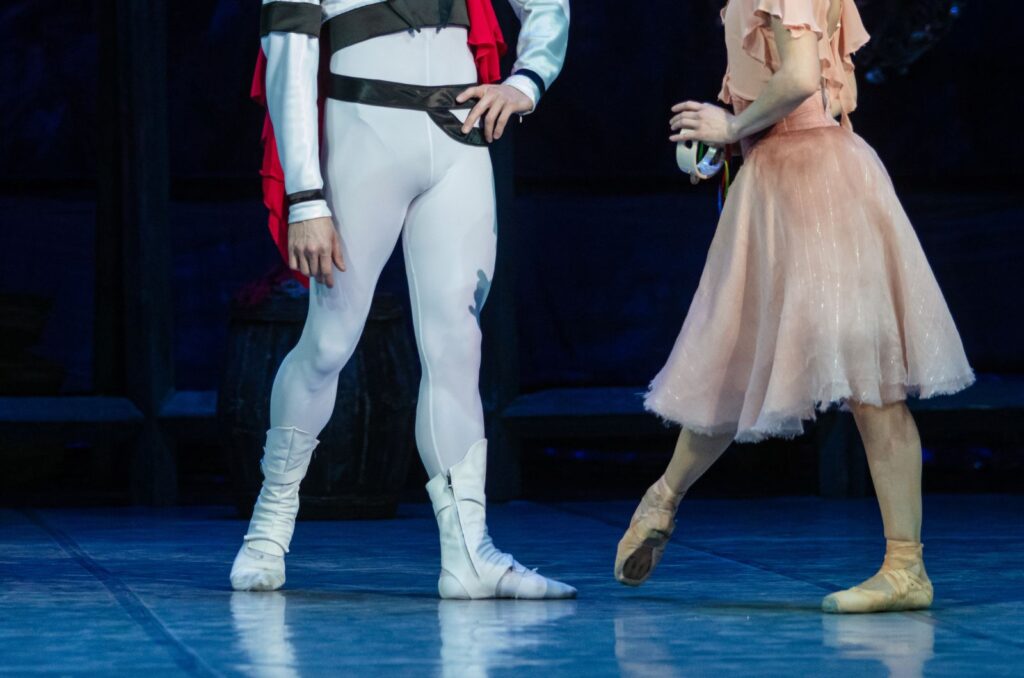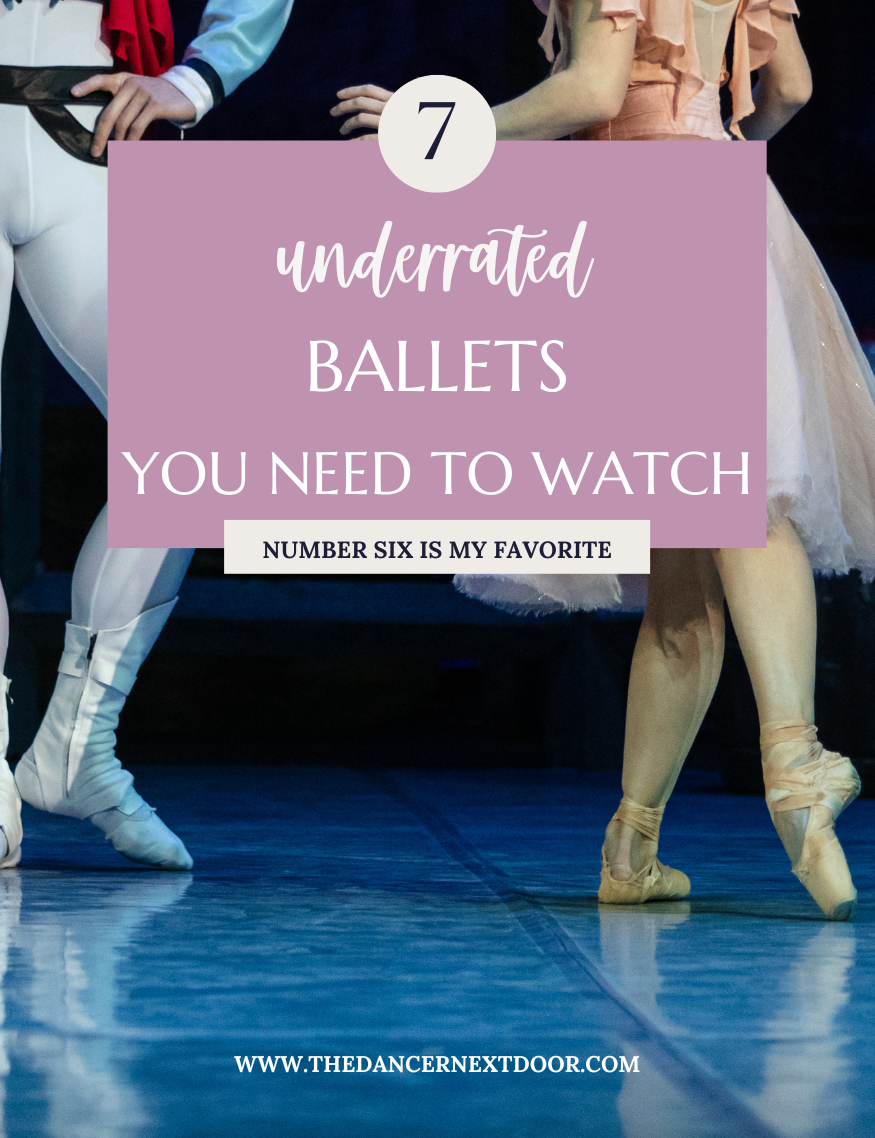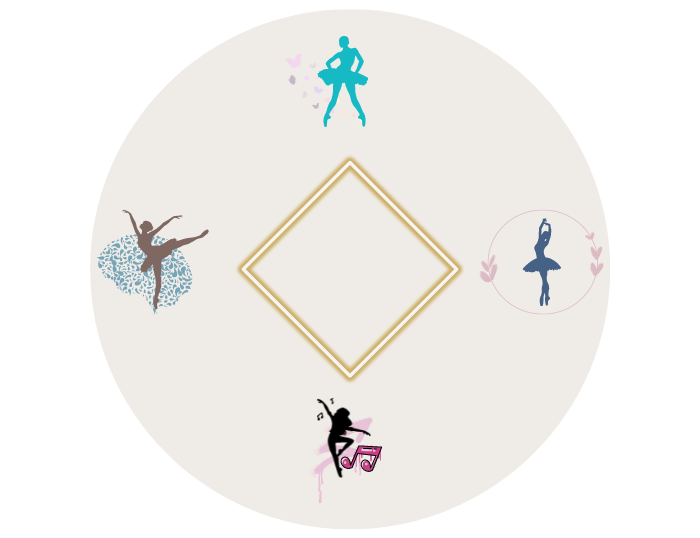Classical ballet is often associated with iconic performances like “Swan Lake” and “The Nutcracker.” However, the world of ballet is rich with lesser-known gems that offer wonderful stories, beautiful choreography, and unique cultural insights. In this blog post, we explore seven lesser-known classical ballets that deserve a spotlight. Each ballet brings something unique to the onlooker and can inspire you in your own ballet performance.
La Fille mal gardée
Title: La Fille mal gardée (The Poorly Guarded Girl or The Wayward Daughter)
Choreographer: Originally by Jean Dauberval in 1789; most modern versions are based on the choreography by Frederick Ashton (1960) or the 1828 revival by Jean-Pierre Aumer.
Composer: The original score was by an unknown composer, with music adapted by Léo Delibes and others. Frederick Ashton’s version uses music adapted and arranged by John Lanchbery from Ferdinand Hérold’s score.
Premiere: The original ballet premiered in Bordeaux, France, in 1789.
Plot Summary:
La Fille mal gardée is a delightful and charming ballet set in a rural village. The story revolves around Lise, the spirited daughter of Widow Simone, and her love for Colas, a young farmer. Widow Simone wants Lise to marry the wealthy but bumbling Alain, the son of a rich vineyard owner. Despite her mother’s attempts to keep them apart, Lise and Colas find clever ways to meet and express their love. The ballet ends happily with the lovers outwitting Widow Simone and Alain, securing their union.
Key Characters:
- Lise: The protagonist, a lively and independent young woman in love with Colas.
- Colas: A handsome and clever young farmer who loves Lise.
- Widow Simone: Lise’s overprotective mother, who prefers Alain as her daughter’s suitor.
- Alain: The comically awkward but wealthy suitor chosen by Widow Simone.
Notable Scenes and Dances:
- The Ribbon Dance: A charming pas de ruban where Lise and Colas use a ribbon to create intricate patterns, symbolising their love.
- The Clog Dance: Performed by Widow Simone, this dance adds a humorous touch to the ballet, showcasing her character’s rustic charm.
- The Harvest Festival: A lively scene featuring villagers celebrating with various folk dances and festivities.
Style and Significance:
La Fille mal gardée stands out for its use of pantomime and comedy, which bring the characters to life and make the story accessible and entertaining. The ballet’s rural backdrop and depiction of peasant life offer a refreshing contrast to the more dramatic and fantastical settings of other classical ballets. As one of the oldest ballets still performed today, it is significant for its enduring appeal and influence on ballet comedy.
Raymonda
Title: Raymonda
Choreographer: Marius Petipa
Composer: Alexander Glazunov
Premiere: January 19, 1898, at the Mariinsky Theatre in St. Petersburg, Russia
Plot Summary:
Raymonda is a grand ballet set during the time of the Crusades, revolving around the noblewoman Raymonda. The story begins with preparations for the return of her betrothed, Jean de Brienne, who is away fighting in the Crusades. During his absence, a saracen knight maned Abderakhman pursues Raymonda, and attempts to win her love. Despite Abderakhman’s advances and gifts, Raymonda remains loyal to Jean.
The tension culminates when Abderakhman tries to abduct Raymonda at her birthday celebration. Just in time, Jean de Brienne returns, challenges Abderakhman to a duel, and defeats him. The ballet concludes with a grand wedding celebration for Raymonda and Jean, showcasing a series of elaborate dances and variations.
Key Characters:
- Raymonda: The heroine, a noblewoman betrothed to Jean de Brienne.
- Jean de Brienne: A Crusader knight and Raymonda’s fiancé.
- Abderakhman: A saracen knight who attempts to win Raymonda’s love.
- The White Lady: A spectral figure who serves as Raymonda’s guardian and advisor.
Notable Scenes and Dances:
- The Dream Sequence: Raymonda dreams of her fiancé, Jean, surrounded by fantastical and ethereal elements, emphasising her longing and love.
- The Grand Pas Classique Hongrois: A majestic series of classical dances performed during Raymonda and Jean’s wedding celebration, showcasing Hungarian-inspired choreography.
- The Vision Scene: Guided by the White Lady, Raymonda has a vision that reassures her of Jean’s imminent return and foreshadows the danger posed by Abderakhman.
Style and Significance:
Raymonda is renowned for its rich and intricate choreography, a hallmark of Marius Petipa’s work. The ballet blends classical and character dances, creating a vibrant tapestry of styles. Glazunov’s score is celebrated for its lush orchestration and thematic complexity, perfectly complementing Petipa’s grand choreography.
The ballet is notable for its elaborate costumes and sets, reflecting the mediaeval and exotic influences of its storyline. Raymonda also stands out for its strong female lead, showcasing Raymonda’s grace, strength, and loyalty.
Paquita

Title: Paquita
Choreographer: Originally by Joseph Mazilier in 1846; later revised by Marius Petipa in 1881.
Composer: Édouard Deldevez for the original; Ludwig Minkus added music for the Petipa revision.
Premiere: April 1, 1846, at the Paris Opéra Ballet
Plot Summary:
Paquita is a vibrant and romantic ballet that tells the story of a young Romani girl named Paquita who discovers her noble heritage. The ballet is set in Spain during the early 19th century, blending elements of romance, adventure, and cultural intrigue.
The story begins with Paquita living with a group of Romani people, unaware of her true noble lineage. She encounters and falls in love with Lucien d’Hervilly, a young French officer. Lucien reciprocates her feelings, but their love faces numerous obstacles, including a jealous suitor, Iñigo, and a dangerous plot against Lucien’s life.
Paquita’s true origins are revealed when she is recognised by a medallion she wears, which proves she is the lost daughter of a noble family. The ballet concludes with the lovers’ joyous union and a grand celebration, highlighting Paquita’s rise from a humble Romani girl to her rightful place in society.
Key Characters:
- Paquita: The protagonist, a spirited Romani girl who discovers her noble heritage.
- Lucien d’Hervilly: A French officer who falls in love with Paquita.
- Iñigo: A jealous suitor who conspires against Lucien.
Notable Scenes and Dances:
- The Romani Camp: Introduces Paquita and showcases lively and colourful dances reflecting Romani culture.
- The Grand Pas Classique: A centrepiece of the ballet, featuring Paquita and Lucien. This series of technically demanding dances is often performed independently in ballet galas.
- The Recognition Scene: Paquita’s noble origins are revealed, leading to her reunion with her family.
- The Finale: A grand celebration with elaborate dances, culminating in Paquita and Lucien’s wedding.
Style and Significance:
Paquita is notable for its blend of romantic narrative and technically challenging choreography. The ballet’s vibrant and energetic dances, particularly the Grand Pas Classique, are celebrated for their precision, elegance, and complexity. The music by Édouard Deldevez and Ludwig Minkus complements the lively Spanish setting with its rhythmic and melodic richness.
The ballet’s themes of love, identity, and social ascent resonate with audiences, making Paquita a timeless classic. The character of Paquita, with her spirited nature and resilience, is a strong and engaging heroine.
Sylvia
Title: Sylvia
Choreographer: Originally choreographed by Louis Mérante in 1876; the most well-known version was revived by Sir Frederick Ashton in 1952.
Composer: Léo Delibes
Premiere: June 14, 1876, at the Palais Garnier in Paris, France
Plot Summary:
Sylvia is a mythological ballet that tells the enchanting story of Sylvia, a huntress nymph in the service of the goddess Diana, and her romantic entanglement with the shepherd Aminta. The ballet is set in a picturesque and magical world filled with gods, nymphs, and mortals.
The story begins with Aminta falling in love with Sylvia after seeing her in the forest. Sylvia, initially disdainful of love, shoots Aminta with an arrow, wounding him. Eros, the god of love, intervenes, and Aminta is revived. Sylvia is then abducted by the wicked hunter Orion, who tries to seduce her. She manages to escape with the help of Eros and returns to find Aminta. The ballet concludes with their joyous reunion and a celebration of love, overseen by Diana herself.
Key Characters:
- Sylvia: The protagonist, a huntress nymph and devotee of Diana.
- Aminta: A gentle and lovestruck shepherd who falls in love with Sylvia.
- Orion: A villainous hunter who abducts Sylvia.
- Eros: The god of love who helps Sylvia and Aminta.
- Diana: The goddess of the hunt, who ultimately blesses the union of Sylvia and Aminta.
Notable Scenes and Dances:
- The Forest Glade: Aminta first sees Sylvia and is struck by her beauty. This scene includes beautiful pastoral dances.
- The Abduction: Orion kidnaps Sylvia, leading to dramatic and emotionally charged choreography.
- The Bacchanalia: A lively and festive dance led by Orion to entertain Sylvia during her captivity.
- The Finale: Sylvia and Aminta are reunited, and their love is celebrated with grand, joyful dances under the blessing of Diana.
Style and Significance:
Sylvia is known for its lush and melodic score by Léo Delibes, which has been praised for its richness and orchestral colour. The music perfectly captures the pastoral and mythological themes of the ballet, enhancing the narrative with its lyrical and dramatic qualities.
The choreography, especially in Frederick Ashton’s revival, is celebrated for its grace and technical brilliance. Ashton’s version, in particular, brought new life to the ballet, incorporating his signature style that emphasises fluid movements, intricate footwork, and expressive storytelling.
The Pharaoh's Daughter
Title: The Pharaoh’s Daughter
Choreographer: Marius Petipa
Composer: Cesare Pugni
Premiere: January 18, 1862, at the Bolshoi Kamenny Theatre in St. Petersburg, Russia
Plot Summary:
The Pharaoh’s Daughter is a grand ballet that transports audiences to ancient Egypt, blending romance, adventure, and mysticism. The story begins with the Englishman Lord Wilson seeking shelter from a storm in an Egyptian pyramid. As he smokes opium, he falls into a deep sleep and dreams he is in ancient Egypt, transformed into Ta-Hor, an Egyptian nobleman.
In his dream, Ta-Hor saves Aspicia, the Pharaoh’s daughter, from a lion attack. They fall in love, but their romance is challenged by the High Priest of the Nile, who desires Aspicia for himself. To escape the High Priest’s clutches, Aspicia throws herself into the Nile, invoking the protection of the river god.
Aspicia is saved, and she and Ta-Hor are eventually reunited, but the dream is abruptly ended when Lord Wilson is awakened. He returns to reality, forever changed by the vivid and fantastical dream of his adventure in ancient Egypt.
Key Characters:
- Aspicia: The Pharaoh’s daughter, who falls in love with Ta-Hor.
- Ta-Hor (Lord Wilson): The protagonist, an Englishman who dreams he is an Egyptian nobleman.
- The High Priest of the Nile: The antagonist who desires Aspicia and attempts to thwart her romance with Ta-Hor.
- The Pharaoh: Aspicia’s father, who plays a crucial role in the unfolding drama.
- The River God: A divine figure who saves Aspicia when she leaps into the Nile.
Notable Scenes and Dances:
- The Storm and Dream Sequence: Lord Wilson’s transformation into Ta-Hor and the dramatic shift to ancient Egypt.
- The Lion Hunt: Ta-Hor saves Aspicia from a lion, showcasing heroic and dynamic choreography.
- The Underwater Scene: Aspicia’s leap into the Nile and her rescue by the river god, featuring ethereal and mystical elements.
- The Grand Pas d’Action: A grand and technically demanding dance sequence that highlights the ballet’s classical elegance.
- The Finale: The dream’s abrupt end and Lord Wilson’s return to reality, reflecting on his fantastical journey.
Style and Significance:
The Pharaoh’s Daughter is renowned for its opulent staging, elaborate costumes, and grandiose sets that vividly depict ancient Egypt. The ballet’s choreography by Marius Petipa is characterised by its grandeur, complexity, and the incorporation of Egyptian-inspired movements and themes.
Cesare Pugni’s score enhances the exotic and adventurous atmosphere of the ballet, with rich orchestration and melodic motifs that evoke the ancient setting. The ballet is a spectacle of visual and musical storytelling, captivating audiences with its blend of fantasy and romance.
Esmeralda

Title: Esmeralda
Choreographer: Originally choreographed by Jules Perrot in 1844; later revised by Marius Petipa.
Composer: Cesare Pugni
Premiere: March 9, 1844, at Her Majesty’s Theatre in London
Plot Summary:
Esmeralda is a ballet inspired by Victor Hugo’s novel Notre-Dame de Paris. It tells the story of Esmeralda, a beautiful Romani girl, and her adventures in mediaeval Paris. The ballet is filled with drama, romance, and tragedy, capturing the essence of Hugo’s narrative through dance.
The story follows Esmeralda, who captures the hearts of many men, including the deformed bell-ringer Quasimodo, the handsome Captain Phoebus, and the sinister Archdeacon Frollo. Frollo’s obsession with Esmeralda leads to a series of dramatic events, including false accusations and imprisonment. Esmeralda’s pure heart and bravery shine through as she navigates the dangers of her world.
In the end, Esmeralda’s life is tragically cut short due to Frollo’s machinations, and Quasimodo mourns her loss. Despite the tragic ending, the ballet highlights themes of love, sacrifice, and the battle between good and evil.
Key Characters:
- Esmeralda: The protagonist, a compassionate and spirited Romani girl.
- Quasimodo: The kind-hearted but deformed bell-ringer who loves Esmeralda.
- Captain Phoebus: A handsome and brave soldier who captures Esmeralda’s heart.
- Claude Frollo: The Archdeacon of Notre-Dame, whose obsession with Esmeralda leads to tragedy.
- Pierre Gringoire: A poet who becomes Esmeralda’s friend and ally.
Notable Scenes and Dances:
- Esmeralda’s Dance: A captivating solo where Esmeralda charms the crowd with her tambourine dance, showcasing her grace and spirit.
- The Pas de Deux with Phoebus: A romantic and tender duet highlighting the love between Esmeralda and Phoebus.
- The Gypsy Camp: A vibrant and lively scene featuring energetic dances that depict the Romani culture.
- The Courtroom Scene: A dramatic sequence where Esmeralda is falsely accused and faces her trial.
- The Finale: The tragic ending where Esmeralda is executed, and Quasimodo mourns her death, emphasising the emotional depth of the story.
Style and Significance:
Esmeralda is notable for its blend of dramatic storytelling and intricate choreography. The ballet incorporates character-driven dances that convey the complex emotions and relationships of the characters. Cesare Pugni’s score complements the choreography with its rich and evocative melodies, enhancing the narrative’s intensity and beauty.
The ballet also features an array of colourful and elaborate costumes, particularly for the Romani scenes, which add to the visual appeal. The use of props, such as Esmeralda’s tambourine, plays a significant role in the storytelling, making the ballet both dynamic and engaging.
Le Corsaire
Title: Le Corsaire
Choreographer: Originally choreographed by Joseph Mazilier in 1856; later revised by Marius Petipa, and Konstantin Sergeyev.
Composer: Adolphe Adam, Cesare Pugni, Léo Delibes, Riccardo Drigo, and others.
Premiere: January 23, 1856, at the Théâtre Impérial de l’Opéra in Paris, France
Plot Summary:
Le Corsaire is a swashbuckling ballet inspired by Lord Byron’s poem The Corsair. Set in the exotic locales of the Mediterranean, the ballet follows the adventures of the pirate Conrad and his love for the beautiful slave girl Medora. Their romance is threatened by the villainous Pasha Seyd, who desires Medora for himself.
The story takes audiences on a thrilling journey filled with daring escapes, shipwrecks, and dramatic rescues. Along the way, Conrad’s loyal pirate crew and other colourful characters join the fray, adding to the excitement and spectacle of the ballet. Despite facing numerous obstacles, Conrad and Medora ultimately triumph over adversity, proving that love conquers all.
Key Characters:
- Conrad: The swashbuckling pirate captain and the hero of the story.
- Medora: A beautiful slave girl who captures Conrad’s heart.
- Pasha Seyd: The villainous ruler who seeks to possess Medora.
- Gulnare: The Pasha’s favourite concubine who becomes entangled in the pirates’ schemes.
- Birbanto: Conrad’s treacherous lieutenant who betrays him for his own gain.
Notable Scenes and Dances:
- The Slave Market: Conrad first lays eyes on Medora at the bustling slave market, leading to their fateful encounter.
- The Shipwreck: Conrad and his crew navigate treacherous waters and face perilous foes in a dramatic shipwreck scene.
- The Animated Garden (Le Jardin Animé): A grand and opulent garden scene featuring intricate classical choreography and a display of virtuosic dancing.
- The Abduction of Medora: Pasha Seyd attempts to take Medora by force, leading to a daring rescue mission by Conrad and his pirates.
- The Grand Pas de Deux: Conrad and Medora’s passionate and romantic duet, showcasing their love and devotion amidst the chaos of their adventures.
Style and Significance:
Le Corsaire is celebrated for its thrilling storyline, colourful characters, and dazzling choreography. The ballet features a diverse array of dance styles, including classical ballet, character dances, and acrobatic feats, reflecting its adventurous and exotic setting. The score, composed by multiple composers, adds to the grandeur and excitement of the ballet with its sweeping melodies and dramatic flourishes.
I hope you enjoyed learning more about these lesser known ballets and that you’ve found some inspiration for what to explore next.
Whether it’s the grandeur of Raymonda, the swashbuckling adventure of Le Corsaire, or the tragic romance of Esmeralda, each ballet offers a glimpse into a world of imagination and emotion. From the opulent sets and costumes to the exquisite choreography and stirring music, these classical ballets transports us to a realm where dreams come to life on the stage.
I would love to hear your thoughts and experiences with these ballets, so please feel free to share them in the comments below! 👇🏼






